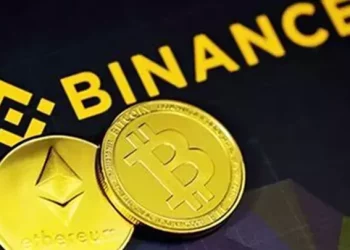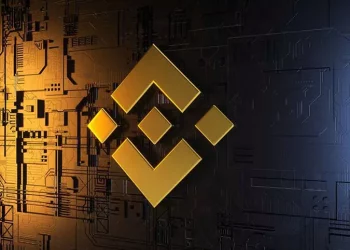Binance is one of the most widely recognized cryptocurrency exchanges in the world. Established in 2017, it has rapidly become a global leader in the crypto trading industry. With millions of users across different countries, Binance provides a platform for buying, selling, and trading cryptocurrencies, as well as other blockchain-related services. But what exactly is Binance, and why has it become such a dominant force in the digital asset world? In this article, we’ll explore everything you need to know about Binance, including its features, services, fees, security measures, and more.
Understanding Binance: What is it and How Does it Work?
Binance is a cryptocurrency exchange platform that allows users to trade a wide variety of digital assets, including Bitcoin, Ethereum, Binance Coin (BNB), and many others. A cryptocurrency exchange is simply a platform where individuals can exchange one type of digital asset for another, or trade it for fiat currencies (like USD, EUR, or GBP). In the case of Binance, it is known for its large selection of cryptocurrencies and low fees.
Binance operates on a web-based platform, mobile app, and desktop software, allowing users to access their accounts and trade on the go. It also provides tools for advanced traders, such as spot trading, margin trading, and futures trading, along with various options for investing and staking.
Binance’s Key Features and Offerings
Binance is known for offering a range of products and services to suit different types of cryptocurrency users. Let’s take a closer look at some of the most notable features of the exchange.
1. Wide Range of Cryptocurrencies
One of the primary reasons Binance stands out is the vast selection of cryptocurrencies it offers. While many exchanges only support a handful of popular coins, Binance allows users to trade hundreds of different cryptocurrencies, including major coins like Bitcoin (BTC), Ethereum (ETH), and Litecoin (LTC), as well as a range of altcoins, including Binance Coin (BNB), Cardano (ADA), and Solana (SOL). With this wide variety, Binance caters to both beginner traders looking to buy and sell popular assets and experienced traders seeking niche tokens.
2. Low Trading Fees
Another attractive feature of Binance is its low trading fees. For basic spot trading, Binance charges a flat fee of 0.10% for both makers (those who place limit orders) and takers (those who match existing orders). These fees are among the lowest in the industry, especially when compared to other popular exchanges like Coinbase, which charges up to 1.49% per transaction.
Binance also offers discounts on trading fees for users who hold and use Binance Coin (BNB) to pay for fees. By using BNB to cover transaction costs, users can receive up to a 25% discount, which can help traders save a significant amount of money over time.
3. Security and Safety Features
Binance takes security seriously and has implemented several advanced measures to protect users’ funds and personal information. The platform uses two-factor authentication (2FA), cold storage, and SSL encryption to safeguard user accounts and transactions. In addition, Binance has set up an Insurance Fund to cover potential losses from security breaches or hacks.
Binance also underwent a significant security incident in 2019 when hackers stole $40 million worth of Bitcoin. However, the platform’s Secure Asset Fund for Users (SAFU) ensured that no users lost funds as the insurance fund covered the losses. This event highlights the importance of using security features like 2FA and having proper wallet management practices.
4. User-Friendly Interface
Binance is designed with both beginner and advanced traders in mind. The platform has a simple interface that allows new users to quickly buy, sell, and trade cryptocurrencies. For more experienced traders, Binance provides advanced trading tools, such as technical charts, real-time data feeds, and various order types (including limit, market, and stop-limit orders).
Binance also offers educational resources to help users understand cryptocurrency trading. The platform’s Binance Academy is a free, comprehensive learning hub where users can access guides, articles, and video tutorials on various topics related to cryptocurrency and blockchain technology.
5. Advanced Trading Options
While Binance is suitable for beginners, it also offers features for experienced traders. These include margin trading, which allows traders to borrow funds to increase their exposure to the market, and futures trading, where users can speculate on the future price of digital assets. Futures contracts allow users to bet on whether the price of a cryptocurrency will go up or down at a future date.
Binance also offers peer-to-peer (P2P) trading, where users can trade directly with each other, bypassing the need for an intermediary. This feature is especially useful for users in countries where certain cryptocurrencies are difficult to access through traditional financial channels.
6. Staking and Yield Farming
Another important feature that sets Binance apart is its Binance Earn program, which allows users to earn passive income by participating in staking and yield farming. Staking involves locking up certain cryptocurrencies to support the network and earn rewards, while yield farming involves providing liquidity to decentralized finance (DeFi) protocols in exchange for interest payments.
Binance offers various options for staking popular coins like Ethereum 2.0, Tezos, and Cardano. Users can also invest in Flexible Savings or Locked Savings to earn interest on their cryptocurrency holdings.
7. Binance Coin (BNB)
Binance Coin (BNB) is the native cryptocurrency of the Binance platform. Initially launched as an ERC-20 token on the Ethereum blockchain, BNB was later migrated to Binance’s own blockchain, Binance Chain. BNB has several use cases within the Binance ecosystem. For example, users can use BNB to pay for trading fees on the platform at a discounted rate.
Beyond that, BNB can also be used in a variety of other ways, such as participating in token sales via Binance Launchpad, trading on Binance’s decentralized exchange (DEX), and paying for services on the Binance Smart Chain network. Additionally, Binance regularly conducts BNB burning events, where they buy back and burn a portion of the BNB supply to reduce the overall supply and increase the token’s value.
How to Get Started with Binance
Getting started with Binance is a straightforward process. Here are the steps to begin trading on the platform:
1. Register an Account
To begin, visit Binance’s website and sign up for an account. You’ll need to provide basic personal information, such as your email address, and set up a password. For added security, Binance will ask you to enable two-factor authentication (2FA) to help protect your account.
2. Verify Your Identity
Binance follows Know Your Customer (KYC) regulations, meaning you will need to verify your identity before you can start trading. This process usually involves uploading a photo of your ID, such as a driver’s license or passport, along with a selfie to confirm your identity.
3. Deposit Funds
Once your account is set up, you can deposit funds into your Binance account. You can deposit cryptocurrencies by transferring them from your personal wallet or deposit fiat currency via bank transfer or credit card. The platform supports various payment methods, depending on your country of residence.
4. Start Trading
After depositing funds, you can start trading cryptocurrencies on the platform. You can choose between different types of orders, such as market orders, limit orders, or stop-limit orders. Binance also provides real-time market data, including price charts, order books, and volume indicators, to help you make informed trading decisions.
5. Withdraw Funds
When you’re ready to cash out, you can withdraw your funds from Binance to your external wallet or bank account. Binance offers a range of withdrawal options, including crypto withdrawals and fiat withdrawals via bank transfer or third-party services.
Fees on Binance
Binance is known for its competitive fees, which are generally much lower than other popular exchanges like Coinbase or Kraken. As mentioned earlier, Binance charges a 0.10% fee for both makers and takers in spot trading. However, users can lower these fees further by using Binance Coin (BNB) to pay for fees, receiving discounts based on their VIP level, and increasing their 30-day trading volume.
Binance also charges fees for withdrawals, which vary depending on the cryptocurrency and the current network conditions. These fees are generally lower than those charged by other exchanges, making Binance an appealing choice for traders who want to minimize transaction costs.
Security Measures on Binance
While no platform is completely risk-free, Binance has a strong security track record. The platform uses advanced encryption protocols, two-factor authentication (2FA), and cold storage solutions to protect user funds. Binance also maintains a Secure Asset Fund for Users (SAFU), which acts as an insurance fund to cover any potential losses resulting from a security breach.
Conclusion:
Binance is one of the largest and most feature-rich cryptocurrency exchanges on the market today. It offers a vast array of cryptocurrencies, advanced trading features, and a user-friendly interface that caters to both beginners and professional traders. With its competitive fees, robust security measures, and innovative tools like staking and yield farming, Binance provides a solid platform for anyone interested in cryptocurrency trading.
Whether you’re a new investor or a seasoned trader, Binance offers a range of tools and services to meet your needs. However, as with any financial platform, it’s essential to understand the risks associated with cryptocurrency trading and take appropriate steps to protect your investments.
Related topics:
Can Americans Trade on Binance?

















